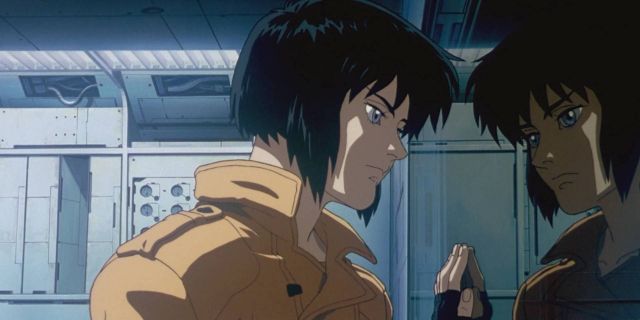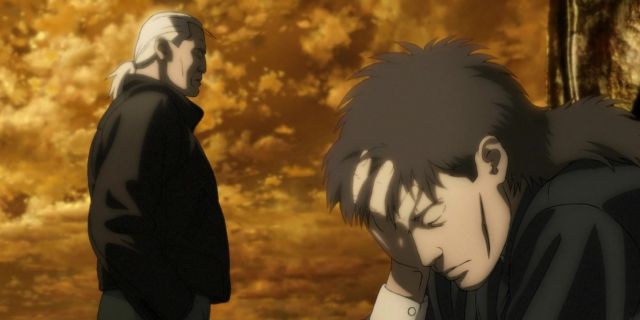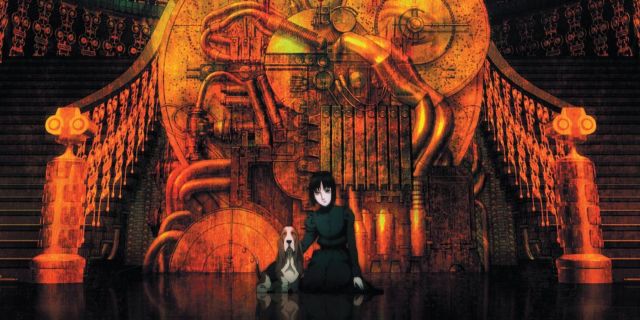Highlights
- Ghost in the Shell: Innocence delves into psychedelic horror, making it a standout in the franchise.
- The film’s rich atmosphere and slow pacing create a creepy and gritty experience.
- The weirdest scene in the film, set in a haunted mansion, is a disturbing payoff to the theme of manipulation using dolls.
Warning: The following contains spoilers for Ghost in the Shell 2: Innocence, available on Blu-ray/DVD on the Crunchyroll Store.
Mamoru Oshii’s Ghost in the Shell from 1995 is deservedly praised for its captivating realization of the post-singularity world that series author Shirow Masamune created. However, Oshii’s eventual sequel, Innocence, would go even further than the original, delving into psychedelic horror the likes of which even this storied franchise has rarely tread since.
Innocence premiered in 2004 and was less conceived as a sequel and more of a standalone entity, hence why Oshii wanted to exclude Ghost in the Shell from the title. It follows Batou and Togusa working as partners following the disappearance of Major Motoko Kusanagi, as they investigate a series of murders committed by gynoids who were designed for pleasure.
Ghost in the Shell’s History of Mind Games

This franchise is no stranger to exploring complex ideas in ways best expressed through leveraging horror tropes. 1995’s classic was built upon a fear of the unknown presented by the emergence of the internet and the hypothetical advances that might connect humanity further to it. The Puppet Master embodies that fear; a living thinking entity born from the sea of information.
Much earlier in that same film, the story explores a more universal fear: the threat of one’s perception of reality being altered. After a police chase, a man is revealed to have had his memories altered such that he believed he was married and had children. His realization that such a life was a lie is easily the most unsettling part of the film, playing into the same anxiety that would inspire stories like The Matrix.
Ghost in the Shell has played around with the idea of memories and perceptions being altered in just about every iteration. Stand Alone Complex explored this idea in various shades, from grounded socio-political commentary on manipulating information to more literal hacking that messes with people’s minds.
This concept is so ubiquitous that, absent of some nuanced or inspired spin on the formula, it can make new iterations feel somewhat tired. For instance, the entire centerpiece of Ghost in the Shell: Arise was Firestarter, a false memory virus that only fulfills its horror potential in Border 1 when the Major is constantly questioning what’s real.
SAC_2045, while perhaps not beloved by the fanbase, puts appreciable effort into injecting variety into this concept. Allusions to 1984 are nothing new, but this series put a creepy spin on the concept of Double-think, making it more literal than ever, leading to one of the most bizarre and bold endings in the franchise’s history. With all that said, none of the other parts of this franchise do it quite like Innocence.
What Makes Innocence Different?

Innocence is a very different kind of Ghost in the Shell in the same way that it is a very different kind of anime, period. So few anime films from the era look quite like this and far fewer are paced like this. This movie brings to mind The Garden of Sinners series from just three years later. Meaning, the film is unafraid to linger on pregnant pauses in the same way live-action dramas might. For a medium so focused on movement, Innocence takes things slow.
There is a rich atmosphere that feels more in line with Blade Runner than ever before, aided by how much of the film is set at night or within dark interiors. It feels creepier than its predecessor and instances of body horror so intrinsic to the entire franchise feel somehow grittier. All of this makes it that much funnier that the film is rated PG-13 in North America.
Because of these qualities, the film can fearlessly dive headfirst into one of the most confusing and psychedelic sequences in the franchise’s history. It’s a moment that, on a first watch, can leave one so perplexed that it might make it hard to stick with the film. However, if one pays close attention, it can also be one of the biggest payoffs in the franchise’s history as well.
Understanding Innocence’s Weirdest Scene

Toward the end of the second act, Batou and Togusa are outside the mansion of Kim, a hacker who they suspect is working with Locus Solus, the company that manufactures the gynoids. Upon entering, it doesn’t take long for things to get strange. It’s like a haunted house where each room is designed to disorient through optical illusions, holograms, and posed dolls.
Strangely enough, in the center of the lobby rests a familiar doll that resembles the Major’s younger body from the end of the 1995 film. It appears lifeless but is accompanied by a puppet of a dog that looks identical to Batou’s own, and a series of letters assembled on the ground, forming the word “aemaeth.”
When the pair finally discover Kim, he has replaced his body with that of a marionette, in line with his obsession with dolls. As they question him, Kim philosophizes about humans as compared to dolls. As this is occurring, Togusa observes the office and becomes transfixed by a model of the very mansion they’re standing in. He looks closely and sees something inside.
Batou and Togusa are outside the mansion of Kim, a hacker who they suspect is working with Locus Solus, the company that manufactures the gynoids. Upon entering, it doesn’t take long for things to get strange. In the center of the lobby rests a familiar doll that resembles the Major’s younger body from the end of the 1995 film. A series of letters are assembled on the ground, forming the word “maeth”… Wait, something is off.
The film very abruptly begins to repeat itself, putting Batou and Togusa through the same scenario but with increasingly twisted changes. Kim’s body is replaced with that of Togusa, the doll resembling the Major keeps leaving new messages, and eventually, the entire mansion starts being bombarded. That is, until Batou frees himself, and helps Togusa escape soon after.
This is not only one of the most disturbing scenes in the franchise, but the payoff to something the whole film has been building up to. A previous, almost equally unexpected scene showed Batou getting into a gunfight in a store, before realizing that he has been hacked into. In the aftermath of this prolonged acid trip, said hacker is revealed to be Kim. The man obsessed with dolls started to manipulate people like puppets to stop them from learning the truth.
Mamoru Oshii uses the theme of dolls to add nuance to the pre-established fear of manipulation at the core of Ghost in the Shell‘s sci-fi premise. The device that Batou used to free Togusa was the same one Ishikawa used to stop him from shooting up the store, but it was also the same tool that Batou used to restrain a Yakuza cyborg earlier, like a puppet on strings.
In this future, the autonomy of these characters is more vulnerable than ever, with the above-described sequence making them nothing more than dolls in a twisted dollhouse. Scenes like this are just one of the reasons that Ghost in the Shell: Innocence deserves far more praise, not just within this franchise, but as an evocative and breathtaking work of science fiction.











Leave a Reply